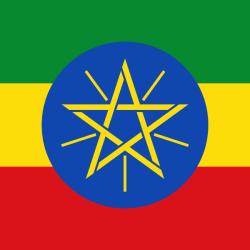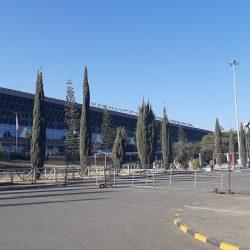Federalism is a system of government that balances power between a central authority and smaller regional entities. Ethiopia’s adoption of federalism in 1991 aimed to address its ethnic diversity, granting self-rule to various ethnic groups. This system has been both praised for promoting autonomy and criticized for potentially fostering division.
This article explores Ethiopian federalism, its benefits, challenges, and how it compares to other federal systems worldwide.
What is Federalism?
Federalism is a system of governance in which power is shared between a central government and regional authorities. This structure allows local governments to make decisions on specific issues such as education, language policy, and law enforcement while remaining part of a unified nation.
Countries like the United States, Germany, and Nigeria have adopted federalism to manage vast territories and diverse populations effectively.
Why Do Countries Choose Federalism?
- Managing Diversity: It allows different ethnic, linguistic, or religious groups to maintain their identity.
- Decentralization of Power: Regions have autonomy in decision-making, reducing central government overreach.
- Conflict Prevention: Federalism can mitigate ethnic and regional tensions by granting self-rule.
Ethiopia’s Shift to Federalism
The Fall of the Derg and the Rise of the EPRDF
Before 1991, Ethiopia was governed under a centralized system. The Derg, a communist military regime, suppressed ethnic identity and imposed a uniform national policy.
The Ethiopian People’s Revolutionary Democratic Front (EPRDF) overthrew the Derg in 1991 and introduced federalism to acknowledge Ethiopia’s ethnic diversity. This was a radical shift from centralized rule to ethnic federalism, where regions were organized along ethnic lines.
The Ethiopian Federal Structure
Ethiopia currently has 12 regional states, each with substantial autonomy. These regions have the power to:
- Establish their own constitution
- Choose their working language
- Maintain regional police forces
- Govern local education systems
Unlike other federations that distribute power based on geography or economic needs, Ethiopia’s federalism is ethnic-based, making it unique.
How Ethiopian Federalism Differs from Other Models
Ethiopia’s federalism is distinct from other federations like the United States, Germany, and Nigeria:
| Ethiopia | Ethnic Federalism | Ethnic groups govern their own regions, right to secession |
| United States | Territorial Federalism | States govern themselves based on geography, not ethnicity |
| Nigeria | Mixed Federalism | Ethnic diversity recognized but without constitutional right to secession |
| Germany | Cooperative Federalism | Central and regional governments share responsibilities |
Ethiopia’s federalism is bold in recognizing ethnic diversity in its constitution (Article 39), which even allows regions to secede and form independent states.
Major Benefits of Ethiopian Federalism
1. Cultural and Linguistic Freedom
Ethiopia has over 80 ethnic groups, and federalism allows them to preserve their languages and traditions. Today, more than 57 languages are used as mediums of instruction in schools.
2. Regional Self-Rule
Federalism grants ethnic groups the right to govern their own affairs. This has allowed historically marginalized groups to gain political representation.
3. Economic Decentralization
Regions have control over their resources, leading to localized economic growth. This autonomy has helped Ethiopia maintain one of the fastest-growing economies in Africa over the past two decades.
Challenges of Ethiopian Federalism
1. Ethnic Conflicts and Displacement
Federalism has not entirely resolved ethnic conflicts. Some regions, like Benishangul-Gumuz and western Tigray, continue to face violence. A recent report found that over 4.4 million Ethiopians have been internally displaced due to ethnic clashes.
2. Party Dominance Over Constitutional Principles
Despite regional autonomy, the ruling party has historically controlled political decision-making. This has led to tensions between regional and central governments.
3. Risk of National Fragmentation
The constitutional right to secession raises concerns about potential disintegration. The Tigray conflict (2020-2022) was a major test of Ethiopia’s federal structure.
The Future of Ethiopian Federalism
For Ethiopian federalism to succeed, reforms must be implemented:
- Increasing democratic participation to prevent one-party dominance.
- Ensuring constitutional principles outweigh party politics.
- Encouraging dialogue between ethnic groups to prevent fragmentation.
Ethiopia must balance ethnic self-rule with national unity to ensure long-term stability.

1. What makes Ethiopian federalism unique?
Ethiopia practices ethnic federalism, where regions are based on ethnic identity rather than geography or economy.
2. Can Ethiopian regions secede?
Yes. Article 39 of the Ethiopian Constitution grants regions the right to secede and form independent states.
3. Has Ethiopian federalism reduced ethnic conflict?
While it has provided autonomy, ethnic tensions remain. Some argue it has intensified divisions rather than resolving them.
4. How many regions does Ethiopia have?
Ethiopia has 12 regional states, with some created in recent years to accommodate ethnic demands.
5. What challenges does Ethiopian federalism face?
Key challenges include ethnic conflicts, political dominance, and potential national fragmentation.
6. What are the benefits of Ethiopian federalism?
It ensures cultural and linguistic freedom, self-rule, and economic decentralization.



